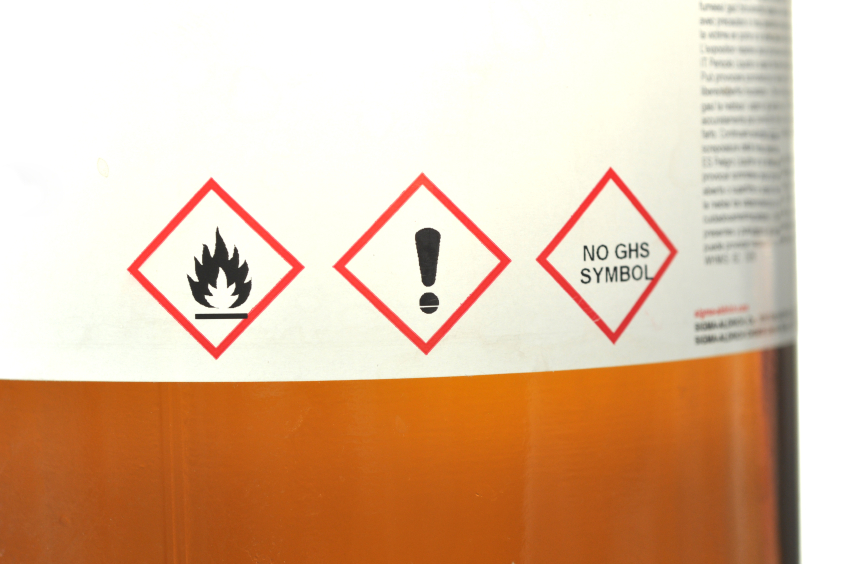
|
Today we will review the requirements for GHS-compliant labels, and tomorrow we will consider the employers’ responsibility for maintaining labels on shipped containers and the options for secondary/workplace container labeling.
As of December 1, 2015, all shipments of chemical containers must include the GHS-compliant label. Compliant labels include six information requirements: the chemical manufacturer or importer, a product identifier (e.g., chemical name), a signal word, a pictogram, a hazard statement, and a precautionary statement. Employers should make sure that they see all six elements on any containers of hazardous chemicals arriving at their workplace.
Join us on Thursday, January 21, for our in-depth webinar, Hazardous Materials: Money-Saving Strategies for Achieving Alignment with International Standards
Six Label Requirements
Under the HazCom GHS container label requirements, chemical manufacturers, importers, and distributors are required to ensure that every container of hazardous chemicals is labeled, tagged, or marked with six information elements. Labels must be in English, but other languages may be included.
- The name, address, and telephone number of the chemical manufacturers, importer, or other responsible party.
- The product identifier. The manufacturer, importer, or distributor can decide the appropriate product identifier. It can be, but is not limited to, the chemical name, code number, or batch number. The same product identifier must be both on the label and in section 1 of the safety data sheet (SDS).
- Signal words. These are used to indicate the level of severity of the hazard. There are only two words used as signal words, “Danger” and “Warning.” “Danger” is used for the more severe hazards and “warning” for the less severe hazards. It is important to note that only one signal word may be on the label no matter how many hazards the chemical may have. If any one hazard warrants a “Danger” signal word, then only “Danger” should appear on the label even if other hazards only need a “Warning” signal word.
- Hazard statements describe the nature of the hazard(s) of a chemical and, where appropriate, the degree of hazard. All applicable hazards must be included in the hazard statement on the label. For instance, if a chemical causes damage to organs, all affected organs must be included in the hazard statement. All applicable routes of exposure must also be included. Hazard statements may be combined. Hazard statements are specific to the hazard classification categories. OSHA gives an example of a hazard statement for OXI252 (disodiumflammy):
- May cause fire or explosion; strong oxidizer
- Causes severe skin burns and eye damage
Are you ready for the January 1, 2016 effective date of the new final rule on hazardous materials? Click here to learn more!
- Precautionary statements describe recommended measures that should be taken to prevent or minimize the effects of exposure to, or improper handling or storage of, hazardous chemicals. The four types of precautionary statements are:
- Prevention
- Response
- Storage
- Disposal
A single label can, and usually does, contain more than one precautionary statement. These may be combined. When a chemical is classified for a number of hazards and the precautionary statements are similar, the strictest statements must be included on the label.
- Pictograms are graphic symbols that communicate specific information about the hazards of a chemical. For hazardous chemicals being shipped or transported from a manufacturer, importer, or distributor, the required pictograms consist of a red square set at a point with a black hazard symbol on a white background. The pictogram must be wide enough to be clearly visible. If a red square frame set at a point does not have a hazard symbol, it is not a pictogram and should not be on the label. Although GHS uses nine pictograms, OSHA only enforces eight. The environmental pictogram is optional.
These are the basics of the GHS container label requirements for manufacturers, importers, and distributors. Check tomorrow’s Advisor for what employers need to know about container labeling.
